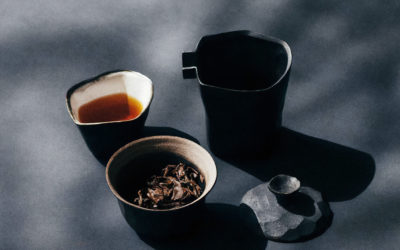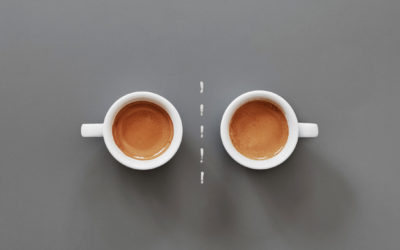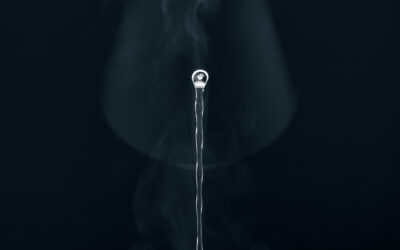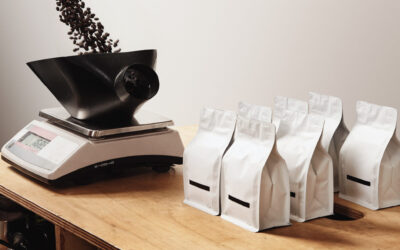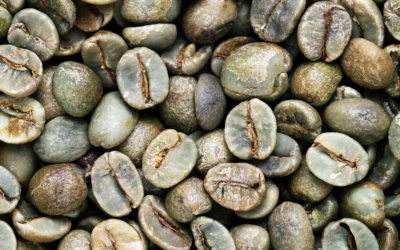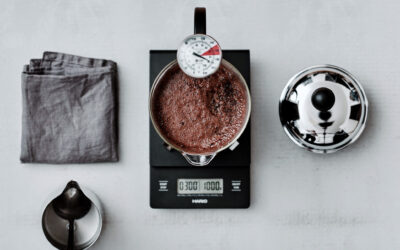Towards a Common Coffee Control Chart
The original Brewed Coffee Control Chart was designed by E.E. Lockhart a little over 60 years ago. Since then, coffee growing, roasting, grinding, and brewing technologies have all changed enormously, and yet the Coffee Control Chart has remained unchanged.
Molecular Targets for Coffee Body
Body can be loosely defined as the tactile sensations of coffee in the mouth. Body is a very important part of coffee quality, and not just in the specialty world. Just read the descriptions on any bag of supermarket coffee to see how prized a full, smooth body is for coffee consumers — perhaps more so than many of the other…
The Coffee Compass
The Coffee Compass is a simple tool that makes it easy to improve your filter coffee brewing. If your coffee tastes anything less than perfect, the Coffee Compass shows you exactly what direction you need to go in to achieve smooth, rich, and balanced brews. We published the original Coffee Compass in 2017 …
Water Chemistry for Tea
Long before Kaldi’s apocryphal goats took their first nibbles of the coffee fruit, tea experts knew about the importance of water quality for brewing*. The eighth-century tea master Lu Yu favoured spring water, and wrote in his guide ‘The Tea Classic’ that ‘the best spring water flows slowly over stone pools on a pristine mountainside’.
Regrinding
Grinding burr technology is like the black box in an aircraft. We can see what we put in, and we can measure what we get out, but there is very little publicly available knowledge about what happens inside the grinder, and why certain designs work the way they do. The debates about whether conical or flat burrs are better …
Strecker Degradation in Coffee Roasting
Anyone with a professional interest in roasting coffee, or baking bread has heard of the Maillard reaction. But the related reaction called Strecker degradation, is much less well-known and it has a crucial role to play in coffee roasting. In this post, we’re going to explore …
Buttergate
We have re-designed and re-imagined one of our classic apps — the Cowculator. This handy tool will help you work out the concentration and nutritional content of your cappuccino. The new version includes two modes that can help you decide what size of cups to buy, and what size of baskets you should use, when you’re planning …
You Can Leave Your Lid Off
While writing our course on Immersion Brewing last year, we noticed a strange phenomenon: when brewing coffee in a French Press, leaving the lid off during the brew seemed to increase extraction substantially. This is the opposite of what we would have expected — leaving the lid on should keep the water hot for longer …
Ten Green Bottles
The milkman, once an endangered species, is making a comeback. Deliveries of milk in reusable glass bottles have seen a surge in recent years in the UK (BBC 2018), and the COVID-19 pandemic has only strengthened demand for milk delivery services. Delivery services are convenient, but are also regarded as more sustainable …
Blooming and Clogging
Our Dean of Studies, Jem Challender, recently noticed that whenever he used more water than usual to bloom his filter coffee, his brews were more prone to clogging. We decided to set up a simple experiment to verify this, and found that the amount of bloom water really does influence how much a brew clogs.
The yo-yo pour
Have you ever sat at a brew bar, watching a barista wave a kettle around as if they are conducting an invisible orchestra, or as if it’s attached to the ceiling with a bungee? “The yo-yo pour” is our name for this kind of unintended up-and-down motion that a barista sometimes makes when brewing a pour-over coffee.
Weiss Distribution Technique
Should we all be using the Weiss Distribution Technique again? Is there a right way and a wrong way to do it? The Weiss Distribution Technique (WDT) is a distribution method for espresso making. Using a fine needle or similar tool, the barista stirs the coffee while it sits in the portafilter.
Coffee Packaging
Because packaging waste has a visible impact in consuming countries, it is often thought of as a major contributor to the environmental impact of coffee. Many coffee roasteries tout their environmental credentials by emphasising their recyclable or compostable packaging. However …
All the Single Baskets
In an ideal world, a single espresso basket would allow you to make half the amount of coffee as a double, and achieve exactly the same flavour as a double, all without changing the grind size. In reality, single baskets usually fall short of this. Most of the time, a single basket requires you to either …
Roasting
After milling, the next major stage in the life cycle of a coffee is roasting. All the life cycle analyses (LCAs) we’ve studied show that the roasting stage contributes very little to the overall greenhouse gas (GHG) emissions from a cup of coffee. In the LCA app, the preset figure for carbon emissions …
Looking at Spent Pucks
Does analysing an espresso puck after extraction tell you anything useful about what happened during extraction? One of the challenges of making espresso is that it’s usually hard to tell if a shot was any good before serving it to a customer. It’s common practice to taste a small sample of a batch brew …
Estimating the Environmental Cost
All other things being equal, we’d expect high-quality speciality coffee to be more environmentally friendly than the average commercial coffee, because many factors that make coffee sustainable also promote high quality. We could find …
Choosing a Green Green Coffee
It’s clear that the two main contributors to emissions from production result from fertiliser use on the farm and fermentation from wet processing at the mill. Yet the studies that we’ve discussed vary widely in their estimates, due partly to the different conditions in each country but also to differences in …
The Ideal Temperature for French Press
For pour-over methods like V60, Barista Hustle has long advocated using very hot water for brewing coffee — just off the boil, or at around 98°C for anyone using a temperature-controlled kettle. However, in our new course about …
Sequestering Carbon
Coffee grows natively under forest trees, and it is well adapted to growing under shade. ‘Agroforestry’ refers to a system of cultivation in which coffee is grown amidst forest trees. These may be native forest trees or they may be deliberately planted, whether for shade and firewood, to fix nitrogen in the soil …
Burning Down The House
Establishing the coffee plantations in Brazil that made it the world’s biggest supplier of coffee came at a huge environmental cost. Huge swaths of tropical rainforest were felled and burned to clear the land for coffee seedlings (M Pendergrast, 2010). The fertile soil, enriched with humus …
Espresso Crema Experiment
In case you didn’t know, for most of our blog posts we ask readers in our Facebook group to pick questions for us to answer. This week, you voted for this question: ‘What happens if you take coffee grinds and put them in the oven at 70° C to disperse roasting gases, and then make an espresso?’
Carbon Footprint of Coffee Processing & Milling
The major contribution to the carbon produced at the wet mill is the methane and other greenhouse gases released in the wastewater. In Kenya, where traditional washed processing uses large amounts of water for fermentation …
Water Hardness
Hardness is a measure of the amount of certain minerals in water. The amount and proportion of minerals in your brewing water can have a dramatic effect on the flavour of your coffee, as well as affect how likely your espresso machine is to get scaled up, so it’s worth trying to understand …



